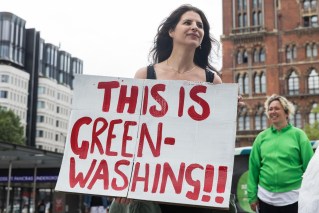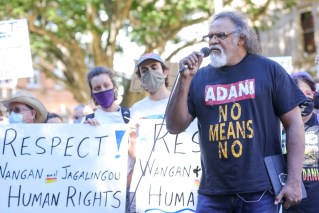What goes up: Brisbane house prices facing a big downturn as rates rise
Capital city house prices would fall by 18 per cent as variable mortgages reach almost 6 per cent by the end of the year, according to the ANZ.


Brisbane house prices have recovered all of the losses recorded in 2022 (file photo)
In Brisbane, ANZ has tipped prices would be slightly positive over the rest of 2022, but fall by about 12 per cent in 2023, which would carve off a large part of the almost 30 per cent gain over the past two years, but still leave home owners in the city well ahead.
Bigger price falls would occur in Sydney and Melbourne. The more positive news was the expectation that house prices would probably rise again in 2024 by as much as 5 per cent.
The bank is not predicting people will be forced to sell their property because of the rising interest rates which were blamed for the downturn.
However, households would be spending about 11 per cent of their income on mortgage repayments, a rise from the 9 per cent before the pandemic, but still well below the peaks of 2008 when it was 13 per cent.
“The biggest factor driving prices lower is reduced borrowing capacity, not a rise in forced sales,” its report by economists Felicity Emmett and Adelaide Timbrell said.
“The expected increase in the (RBA) cash rate to 3.35 per cent by the end of this year will significantly lift household interest payments. ”
The ANZ report said total repayments would rise sharply with more than half of payments on fixed rate loans rising by 40 per cent once the term ends. About 28 per cent of payments on variable mortgages would rise by 40 per cent or more when the cash rate hits its peak.
However, the bigger debts were held by households with higher incomes who cover cope with the increased repayments.
The bank said only about 0.1 per cent of loans were in negative equity where the value of the property is below the value of the debt owed on it. It said RBA estimates were for an increase in negative equity to 2.5 per cent if prices fell by 20 per cent.
It said rebounding population growth would support housing demand.
“Net overseas arrival figures have turned positive and a return of immigration will boost population growth and the housing sector,” the report said.
However, it expected house construction levels to fall but renovations were expected to provide support for the building industry.
ANZ said the cost of materials in the building sector was likely to weigh heavily on the industry.
“The very large backlog of work in the pipeline will support construction in 2022, but we expect a cumulative fall of around 16 per cent through 2023 and 2024 as higher mortgage rates and lower house prices flow through,” it said.












